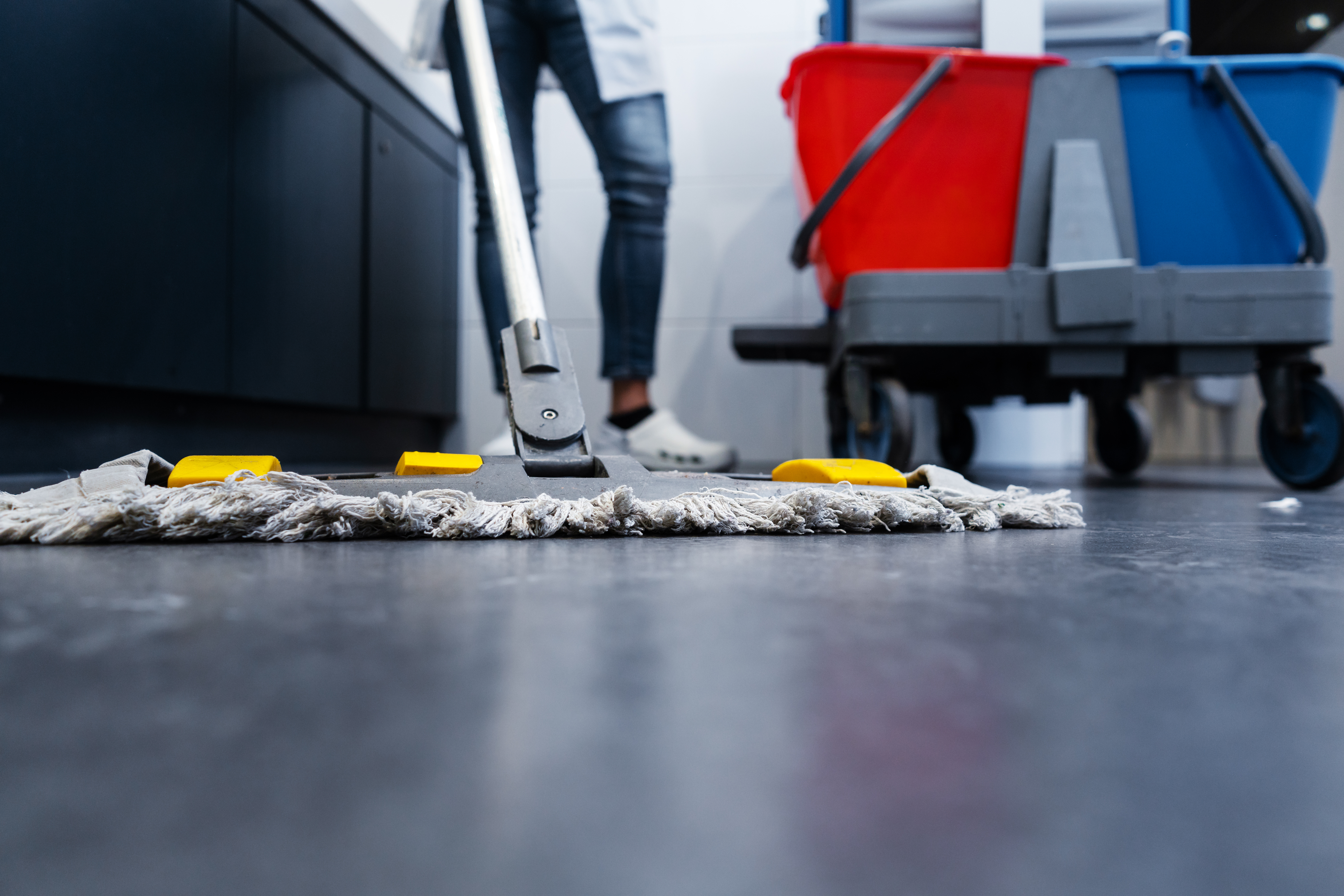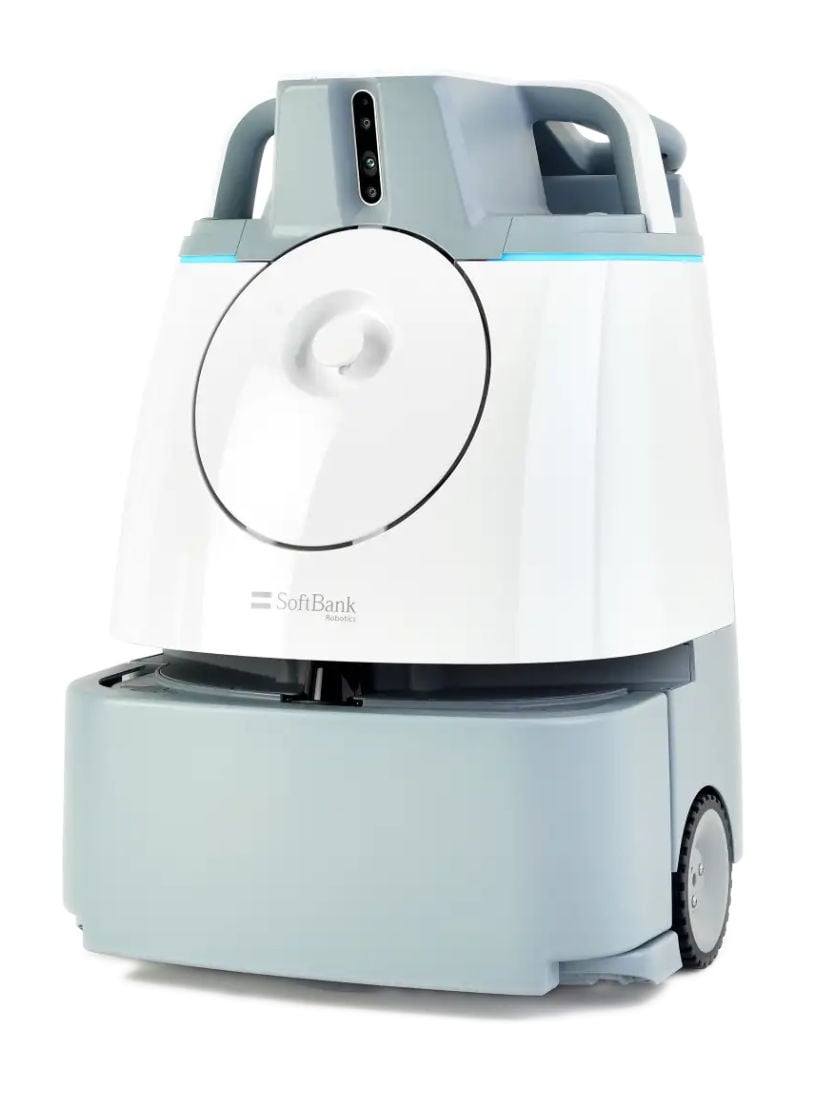It’s been said that first impressions are everything, and that saying rings true for commercial spaces. One of the first things visitors will notice about your space is what it does to their senses. Does the space look drab and dirty, or does it sparkle and shine? Does it smell fresh and clean, or dank and musty? The answers to these questions can leave a lasting impression on your customers, tenants, or other visitors.
In this article, we will explore the most effective strategies and equipment for cleaning different types of commercial flooring, discuss the challenges managers of commercial spaces face, and introduce the latest cleaning technology to help you keep your commercial facility in tip-top shape.
How to Clean Different Types of Commercial Floors
The first step to effective cleaning is understanding the unique needs of various flooring materials throughout your commercial facility. In this section, we will discuss the best practices for cleaning commercial carpets, tile, vinyl, and hardwood floors.
Commercial Carpets
Properly cleaning and maintaining commercial carpets is essential because these floors are one of the biggest air filters for your facility and play a crucial role in maintaining indoor air quality. Carpets trap dust, allergens, and other debris that visitors track in on their shoes day in and day out. The carpet fibers trap these particles, preventing them from circulating in the air; however, this also means that carpets can become a source of indoor pollution if these contaminants are not properly cleaned. Improper cleaning can also speed up wear on the carpet and shorten its lifespan.
To keep commercial carpets clean, use a high-quality vacuum cleaner with strong suction power and HEPA filtration. In general, high-traffic areas should be vacuumed daily to prevent dirt and debris from settling deep into the carpet fibers. In addition, carpets should be periodically deep cleaned using hot water extraction, also known as steam cleaning. However, remember to avoid using harsh chemicals that can damage carpet fibers or leave residues.
Tile
While carpets can hide dirt and debris, solid flooring can start to look dirty much faster. Tile floors require regular sweeping or vacuuming to remove dirt and debris. Use a mop and a pH-neutral tile cleaner to wash the floor, and avoid acidic or alkaline cleaning products that can damage the tile surface or grout. Consider investing in a commercial floor scrubber for larger spaces and high-traffic areas.
Vinyl
To clean vinyl floors, sweep or vacuum to remove loose dirt and debris. Use a damp mop and a mild, non-abrasive cleaner to wash the floor. Avoid using excessive water, as it can seep into the seams and weaken the adhesive. Also, refrain from using abrasive cleaning tools or harsh chemicals that can damage the vinyl surface.Hardwood
Hardwood floors are a higher maintenance flooring that require special care and attention. For example, they are more sensitive to moisture and can scratch easily. To keep hardwood floors clean, sweep or vacuum regularly and use a microfiber mop with a pH-neutral hardwood floor cleaner to remove stubborn dirt and grime. Avoid using excessive water or harsh chemicals that can damage the wood finish.Challenges (and Solutions) to Keeping Commercial Floors Clean
Commercial spaces like hotels, shopping centers, senior homes, and hospitals face unique challenges when it comes to maintaining high standards of cleanliness.
High Foot Traffic
High foot traffic makes it difficult to keep commercial spaces clean. With people constantly coming in and out of the space, more dust, dirt, and allergens are continuously being introduced to the space on people’s shoes and clothing. Some areas–like lobbies and hallways–will be more impacted by high foot traffic than others and require more care to keep them in good shape.
However, these spaces are usually very large, which can make daily vacuuming and floor scrubbing a major drain on your maintenance resources. Instead of tackling this enormous task manually, autonomous cleaning robots, like Whiz and the S50 Pro, can navigate and clean high-traffic areas efficiently and consistently, ensuring a clean and welcoming environment while saving you time and money.
24/7 Operations
Facilities that are open 24/7 often struggle to find the right time to clean. Manual vacuuming and mopping can be disruptive. Plus, cleaning staff need to work around whatever is happening in the space, which can make already lengthy tasks like vacuuming or floor scrubbing take even more of their valuable time. In comparison, autonomous cleaning robots can operate around-the-clock and intelligently navigate any obstacles, providing continuous cleaning without disrupting daily operations.Janitor Turnover
For years, the commercial cleaning industry has faced high turnover rates and staffing shortages that were further exacerbated by the COVID-19 pandemic and its ongoing repercussions. Because of this, managers of commercial spaces often find their cleaning operations chronically understaffed. This can lead staff to resort to ineffective spot cleans and skipped cleans, as staff struggle to keep up.
When remaining staff are overworked because there’s simply too much to do and not enough hands, turnover rates only increase and the problem worsens. Automated cleaning equipment can supplement your janitorial staff, reducing the burden on team members, improving their efficiency, and giving them the time they need to focus on tasks that require a human touch. Implementing automation in this way can also help improve staff retention by improving the staff experience and reducing burnout.
Choosing the Right Equipment for Commercial Cleaning
Selecting the appropriate cleaning equipment can significantly improve cleaning efficiency and effectiveness for your commercial space. The following are the most popular cleaning technologies on the market today, thanks to their cost-effective operation and fast, flexible cleaning power.Commercial Floor Scrubbers
Commercial floor scrubbing robots, like the S50 Pro from Softbank Robotics, use water, cleaning solutions, and scrubbing brushes to remove dirt and grime from floors. These robots are ideal for use in high-traffic indoor environments where floor-cleaning is a constant need.
These robotic scrubbers use sensors and algorithms to navigate large commercial facilities, avoid obstacles in real-time, and systematically remove debris scuffs, stains, and germs from solid flooring. Because floors scrubbing robots work autonomously day or night, they keep spaces looking pristine, delivering high quality and consistent cleaning without disrupting your operations or overburdening your cleaning staff.
Commercial Vacuums
Commercial robot vacuums, like Whiz from Softbank Robotics, are designed to vacuum larger spaces quickly and effectively, while offloading one of the most time-consuming and monotonous tasks from your cleaning team. In fact, Whiz can clean up to 15,000 square feet of carpet on a single charge–in a fraction of the time that it would take to manually vacuum the space. This frees up your staff’s time to focus on higher value and detailed cleaning tasks that require a human touch.
Furthermore, with a commercial robot vacuum, gone are the days of ineffective spot cleans or skipped vacuuming tasks. Instead, a robot vacuum ensures high traffic areas are cleaned to the highest standards daily–improving your indoor air quality, making a lasting impression on visitors, and extending the life of your commercial carpets.
Conclusion
Proper cleaning of commercial floors requires you to both understand the unique needs of various flooring materials and use the right equipment to make floors truly pristine and extend their life. Autonomous cleaning robots can help address common challenges in maintaining commercial spaces, and help you deliver a clean and healthy space for your visitors.
Ready to elevate your commercial cleaning routine with automation? Learn more about the benefits of autonomous cleaning robots, or contact our team to hear how SoftBank’s solutions can improve your cleaning operations.








